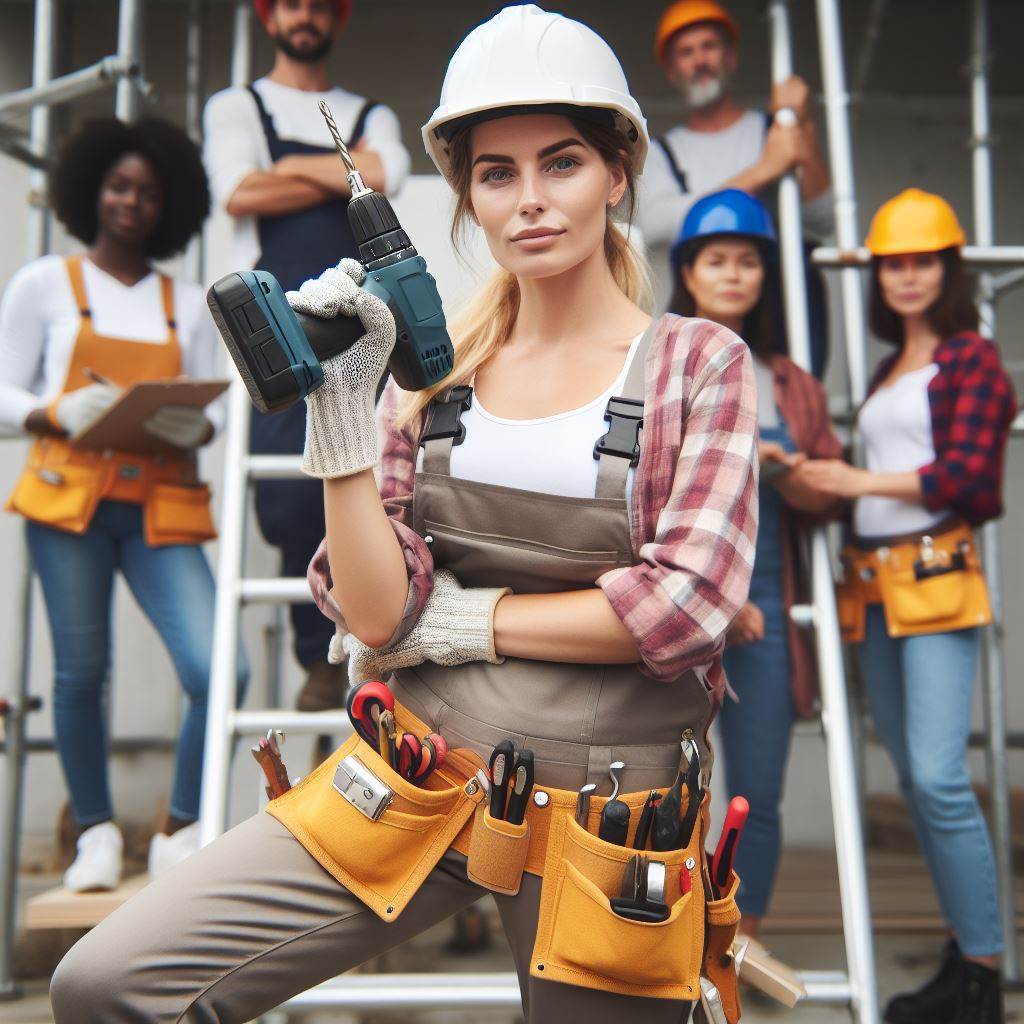Introduction
Safety standards for builders in New Zealand are of utmost importance to ensure the well-being of workers and the public.
Overview of the importance of safety standards for builders in New Zealand
Safety standards are crucial to prevent accidents, injuries, and fatalities in the construction industry.
They help create a safe working environment and instill confidence in clients regarding the quality and professionalism of builders.
The regulatory bodies responsible for enforcing safety standards
In New Zealand, the key regulatory bodies responsible for enforcing safety standards for builders include WorkSafe New Zealand and the New Zealand Building Code.
WorkSafe New Zealand is responsible for administering health and safety regulations in the construction industry.
They provide guidance, monitor compliance, and enforce penalties if safety standards are not met.
The New Zealand Building Code sets out the legal requirements for the design, construction, and durability of buildings.
It includes specific provisions for safety, such as structural integrity, fire safety, and accessibility.
These regulatory bodies play a vital role in ensuring that builders adhere to safety standards to protect workers and the public.
Adhering to safety standards is essential for builders in New Zealand to create a safe working environment, prevent accidents, and maintain high-quality construction practices.
The regulatory bodies, such as WorkSafe New Zealand and the New Zealand Building Code, work together to enforce these standards, promoting the overall safety and well-being of everyone involved in the construction industry.
Overview of Safety Standards for NZ Builders
Safety standards for builders in New Zealand are essential to ensure the well-being of workers and the general public.
These standards are outlined in the Building Act and various regulations, which must be strictly followed to achieve compliance.
Explanation of Safety Standards for Builders in New Zealand
The safety standards for builders in New Zealand encompass a wide range of practices and regulations.
They are designed to protect builders, their workers, and the general public from hazards that may arise during construction projects.
The standards cover areas such as personal protective equipment (PPE), safe work practices, hazard identification, and mitigation strategies.
Builders must adhere to these standards to create a safe working environment.
PPE includes items such as hard hats, safety glasses, high visibility vests, and safety boots, which help protect builders from potential head injuries, eye injuries, and hazards posed by falling objects.
Personalized Career Consulting
Unlock your potential with expert career advice tailored to your goals. Get personalized guidance and actionable steps toward your dream career in New Zealand.
Get StartedSafe work practices refer to guidelines that builders must follow to minimize accidents and injuries.
This includes proper use of tools and equipment, correct handling of materials, and maintaining a clean and organized worksite.
Hazard identification involves recognizing potential dangers and taking appropriate measures to mitigate them.
This may include conducting regular risk assessments, implementing safety signage, and providing relevant training to workers.
The Building Act and Relevant Regulations
The Building Act is the primary legislation that governs building and construction activities in New Zealand. It sets out the framework for safety standards and regulations that builders must adhere to.
Under the Building Act, builders are required to obtain the necessary permits and consents before commencing any construction work.
These permits ensure compliance with safety standards and provide assurance that the building meets the relevant regulations.
Furthermore, there are additional regulations specific to different aspects of construction, such as electrical safety, fire safety, and noise control.
These regulations are in place to address potential hazards in these areas and ensure the overall safety of the building and its occupants.
Importance of Compliance with Safety Standards
Compliance with safety standards is crucial for builders and construction companies in New Zealand.
It not only protects workers from accidents and injuries but also helps to avoid legal consequences and reputational damage.
Non-compliance with safety standards can lead to serious accidents, resulting in injuries or even fatalities.
Such incidents can have a detrimental impact on the lives of workers and their families, as well as causing significant financial and legal burdens for the business.
Failing to comply with safety standards can also result in penalties and fines, which can be substantial and significantly affect a company’s profitability.
Additionally, reputational damage may occur, leading to a loss of trust from clients and potential difficulties in securing future projects.
Basically, safety standards for builders in New Zealand are a crucial aspect of construction.
Compliance with these standards not only helps protect workers and the public but also safeguards the reputation and future success of construction businesses.
Read: Women in Electrical Trades: NZ’s Growing Trend
Key Safety Requirements for NZ Builders
In order to ensure safety on construction sites, New Zealand builders must comply with several key safety requirements.
These include the use of Personal Protective Equipment (PPE), adherence to safe work practices, proper management of hazardous substances, compliance with scaffolding regulations, following electrical safety guidelines, and implementing fall protection measures.
Personal Protective Equipment (PPE)
It is essential for builders to wear the necessary PPE to protect themselves from potential hazards.
This includes hard hats, safety glasses, high-visibility clothing, gloves, and safety boots. Wearing proper PPE significantly reduces the risk of injuries.
Importance of Using Proper PPE to Prevent Injuries
Using the appropriate PPE is crucial as it provides a barrier against hazards such as falling objects, electrical shocks, chemical exposure, and head injuries.
Builders must prioritize their safety by consistently wearing the correct PPE.
Safe Work Practices
Safe work practices are vital in ensuring a hazard-free environment for builders.
This includes following proper lifting techniques, using correct tools, maintaining a clean and organized workspace, and avoiding potential hazards.
Transform Your Career with a Professional CV and Cover Letter
Stand out to employers with an ATS-optimized resume and tailored cover letter designed to match your dream role. Let us craft your job application materials for success!
Get StartedImportance of Promoting a Culture of Safety
Creating a culture of safety on construction sites is essential in preventing accidents.
By promoting safety awareness and encouraging an open dialogue about potential hazards, builders can mitigate risks and ensure everyone’s well-being.
Hazardous Substances Management
Builders need to be aware of regulations surrounding the handling, storage, and disposal of hazardous substances.
This includes labeling containers, using appropriate storage facilities, and ensuring proper disposal to minimize the risk of harm to workers and the environment.
Importance of Proper Handling, Storage, and Disposal Methods
Proper management of hazardous substances is crucial to protect workers, site visitors, and the environment.
Adhering to regulations ensures that potential dangers are minimized, and the risk of accidents or long-term health issues is significantly reduced.
Scaffolding Regulations
Scaffolding must be installed, maintained, and used in accordance with specific regulations. This ensures the safety of workers who are working at heights.
Compliance with these regulations is vital to prevent falls and serious injuries.
Importance of Proper Installation, Maintenance, and Adherence to Safety Guidelines
Ensuring scaffolding is correctly installed, regularly inspected, and used in line with safety guidelines is essential.
Proper maintenance and adherence to regulations safeguard builders from falls and mitigate the risk of accidents on construction sites.
Electrical Safety
Builders should adhere to electrical safety guidelines to minimize the risk of electrical accidents.
This includes hiring licensed electricians for electrical work, keeping electrical equipment in good condition, and following proper procedures during installations and repairs.
Importance of Hiring Licensed Electricians and Following Proper Procedures
Electrical work should only be performed by qualified professionals.
Hiring licensed electricians ensures that electrical installations and repairs are conducted safely, reducing the risk of electrical shocks, fires, and other electrical accidents.
Fall Protection
Builders must implement fall protection measures to prevent falls from heights.
This includes using proper fall protection equipment such as harnesses, guardrails, and safety nets, as well as implementing safety measures like barricades and warning signs.
Importance of Using Proper Fall Protection Equipment and Implementing Safety Measures
Falls from heights are a leading cause of serious injuries and fatalities on construction sites.
Utilizing appropriate fall protection equipment and implementing safety measures significantly reduce the risk of falls, protecting the lives and well-being of builders.
Read: Apprenticeships in Electrical Work: NZ Focus

Enforcement and Penalties
In New Zealand, safety standards for builders are strictly enforced to ensure the well-being of workers and the public. Compulsory industry-specific guidelines are in place to achieve this.
The enforcement of safety standards is overseen by WorkSafe New Zealand, a government agency responsible for regulating workplace health and safety.
They conduct inspections and audits to ensure compliance.
Inspectors have the authority to visit construction sites unannounced, examining whether builders adhere to safety regulations. They assess everything from proper training to the use of protective equipment.
Builders found to be non-compliant face severe penalties. These penalties serve as a deterrent to prevent negligence and prioritize safety. The consequences of non-compliance can range from fines to imprisonment.
Boost Your Career with a Standout LinkedIn Profile
Attract recruiters and expand your network with a fully optimized LinkedIn profile tailored to highlight your strengths and professional goals. Let your profile open doors to new opportunities!
Get OptimizedSafety standards are enforced in New Zealand
- WorkSafe New Zealand follows a proactive approach, empowering inspectors to identify potential risks before accidents occur. They educate builders on safety best practices.
- Inspections involve checking for hazards, such as unsafe scaffolding, inadequate fall protection, or poor ventilation. They ensure compliance with regulations specific to various construction activities.
- Inspectors examine builders’ training records, hazard assessments, safety plans, and incident reporting procedures. They prioritize preventive measures to avoid accidents on worksites.
- If a violation is identified, an inspector may issue an improvement notice, requiring the builder to rectify the issue within a specified timeframe. Failure to comply may lead to penalties.
- If serious non-compliance is discovered, such as repeated violations or immediate danger to workers, an on-the-spot fine may be imposed, emphasizing the gravity of safety violations.
- WorkSafe New Zealand also encourages workers to report safety concerns anonymously. This ensures accountability and helps identify areas where safety standards may be compromised.
The penalties for non-compliance with safety standards
- Penalties for non-compliance play a crucial role in maintaining safety standards in the construction industry.
- Fines for individuals can reach up to NZD 300,000, while corporations may face fines of up to NZD 1.5 million.
- In severe cases, jail terms of up to five years can be imposed on individuals or directors of companies who showed willful disregard for safety regulations.
- Aside from financial and legal consequences, non-compliance tarnishes the reputation of builders, potentially leading to loss of contracts and credibility in the industry.
- The financial burden of penalties and legal actions can be crippling, impacting not only the builders but also the overall economy.
- Furthermore, non-compliance puts workers’ lives at risk and can cause serious injuries or even fatalities, with devastating consequences for families and communities.
The importance of understanding the consequences and the need to prioritize safety
Builder’s prioritize safety standards not only to avoid the penalties but also to protect the well-being of workers and the public.
The consequences of non-compliance go beyond financial and legal issues. Accidents can have long-lasting physical, emotional, and financial impacts on individuals and their families.
Understanding the importance of adhering to safety regulations ensures the development of a safety culture within the industry, promoting sustainable practices and a healthier work environment.
Builders should invest in ongoing training and education to stay updated on safety standards, ensuring they always prioritize the safety and well-being of everyone involved.
In essence, enforcing safety standards in New Zealand’s construction industry is vital to protect workers and promote a culture of safety.
Penalties for non-compliance act as a deterrent and emphasize the significance of prioritizing safety on every construction site.
Read: The Impact of Technology on NZ Electricians
Resources and Support
When it comes to safety standards for NZ builders, having access to resources and support is crucial. Builders need to ensure they comply with these standards to protect themselves and those around them.
Available resources and support for builders to ensure compliance with safety standards
Fortunately, there are various resources available to assist builders in understanding and meeting safety standards.
Industry associations, such as the Registered Master Builders Association (RMBA) and the Certified Builders Association of New Zealand (CBANZ), provide valuable guidance and training opportunities.
Builders can turn to these associations for information on safety standards, regulations, and best practices.
They offer educational materials, workshops, and seminars tailored specifically to builders’ needs, keeping them up-to-date with the latest safety requirements.
Industry associations and organizations providing guidance and training opportunities
In addition to industry associations, there are several organizations that provide resources and support to builders in complying with safety standards.
WorkSafe New Zealand, for instance, is a government agency dedicated to promoting health and safety across various industries.
Builders can access WorkSafe’s website to find comprehensive information on safety standards, regulations, and guidance specific to construction.
They also offer training programs and resources to help builders understand and implement the necessary safety measures.
Local authorities also play a significant role in ensuring safety standards are met by providing resources and support to builders.
Councils often offer building consent processes, inspections, and advice to ensure compliance with safety regulations.
Builders should take advantage of these resources and support systems. By doing so, they can enhance their knowledge, learn from experts in the field, and ultimately contribute to creating safer construction sites in New Zealand.
When working on a construction project, builders should always reference the various resources available to them.
This includes safety manuals, guidelines, and checklists provided by industry associations, organizations, and government agencies.
It is essential for builders to understand the safety standards relevant to their specific projects and take appropriate measures to ensure compliance.
This includes implementing appropriate safety equipment, conducting regular inspections, and providing necessary training to workers.
By prioritizing safety standards, builders can mitigate the risk of accidents, injuries, and fatalities on construction sites.
Adhering to safety guidelines not only protects lives but also helps builders maintain a positive reputation and avoid legal complications.
Ultimately, builders need to view compliance with safety standards as a crucial part of their profession.
It not only safeguards themselves and their workers but also contributes to the overall well-being and image of the construction industry in New Zealand.
Read: Electrical Code Updates 2024: What NZ Needs to Know
Conclusion
Importance of safety standards for NZ builders
In closing, safety standards for NZ builders are of utmost importance in ensuring the well-being of workers and the quality of construction projects.
Compliance with regulations not only protects workers from harm but also safeguards the reputation and credibility of builders.
Encouragement to prioritize safety and comply with regulations
It is crucial for builders to prioritize safety in their projects and implement necessary measures to mitigate risks.
By doing so, they not only prevent accidents and injuries but also improve efficiency and productivity on site.
To stay informed about the latest safety standards and regulations, builders should actively seek additional resources such as workshops, training programs, and industry publications.
Additionally, they can engage in discussions and collaborate with other builders to share best practices and promote a safe working environment.
Call-to-action to stay informed, seek additional resources, and promote a safe working environment
As individuals and community members, we also have a role to play in promoting safety for NZ builders.
By advocating for stricter safety regulations and supporting organizations that actively work towards improving safety standards, we can contribute to a safer construction industry.
Remember, the safety of builders should be a top priority for all stakeholders involved. Together, let us sustain a culture of safety, ensuring that every builder goes home safe and sound at the end of the day.




